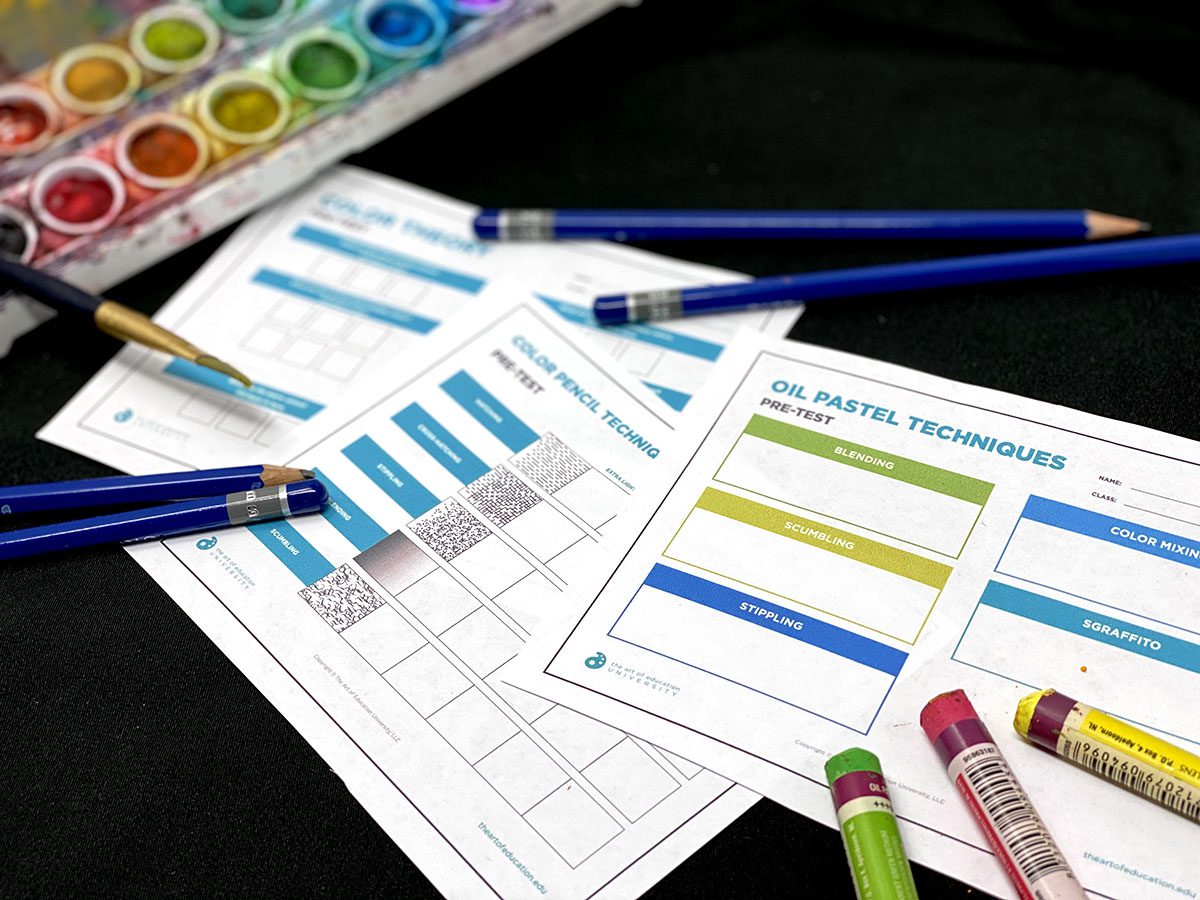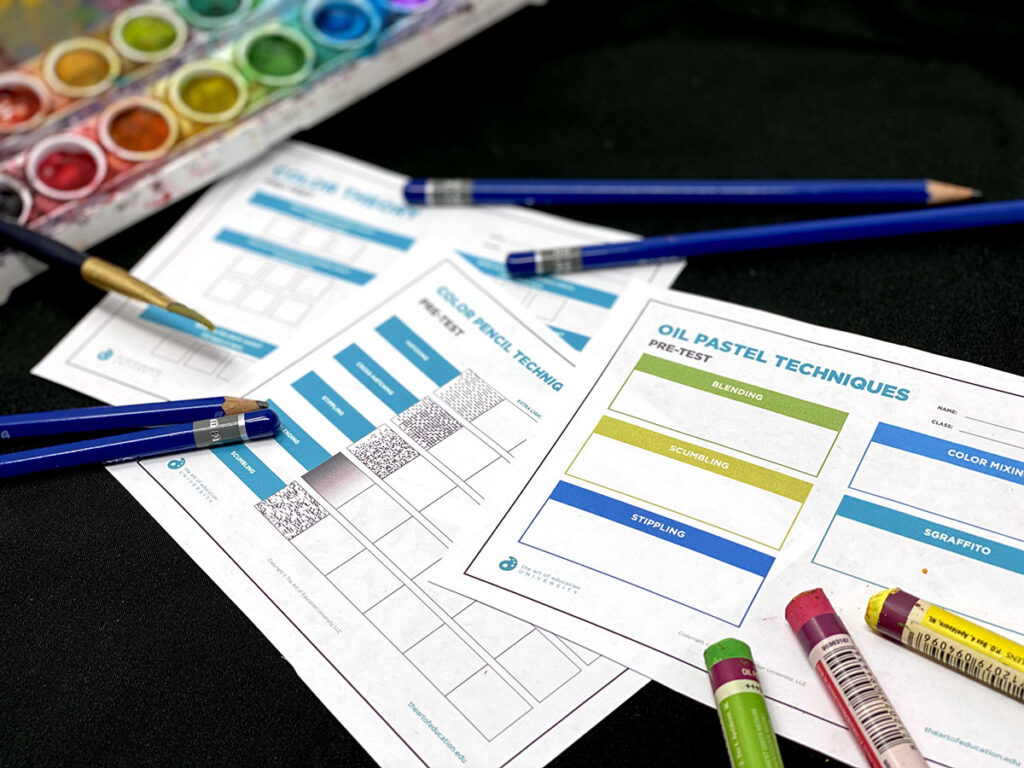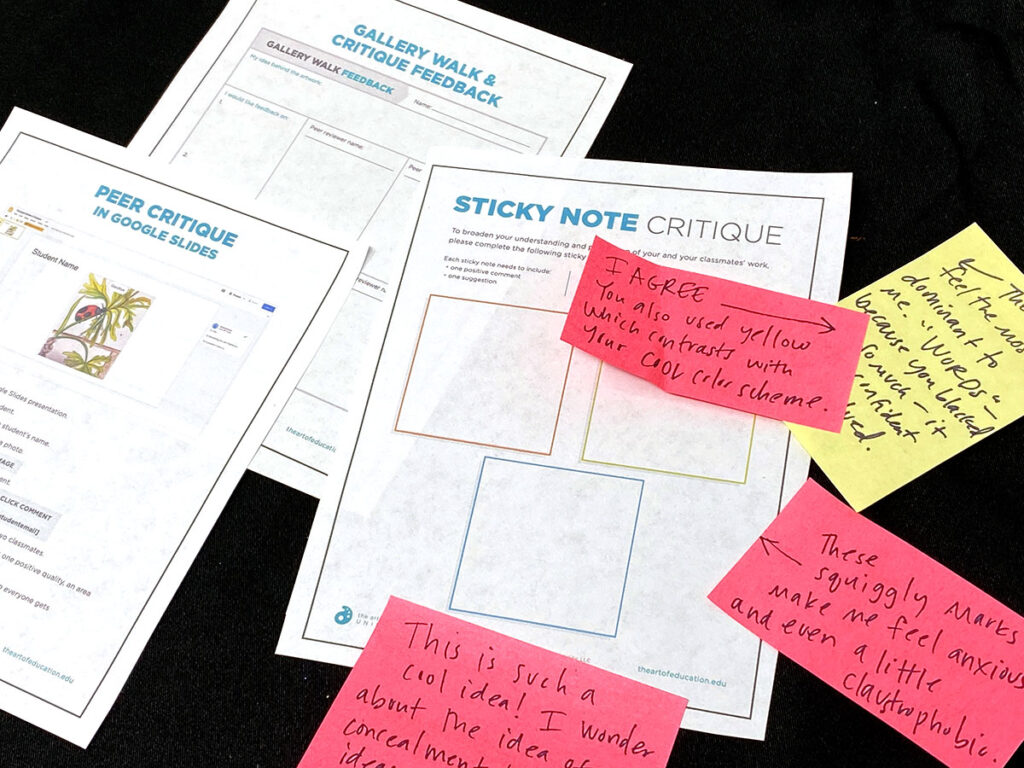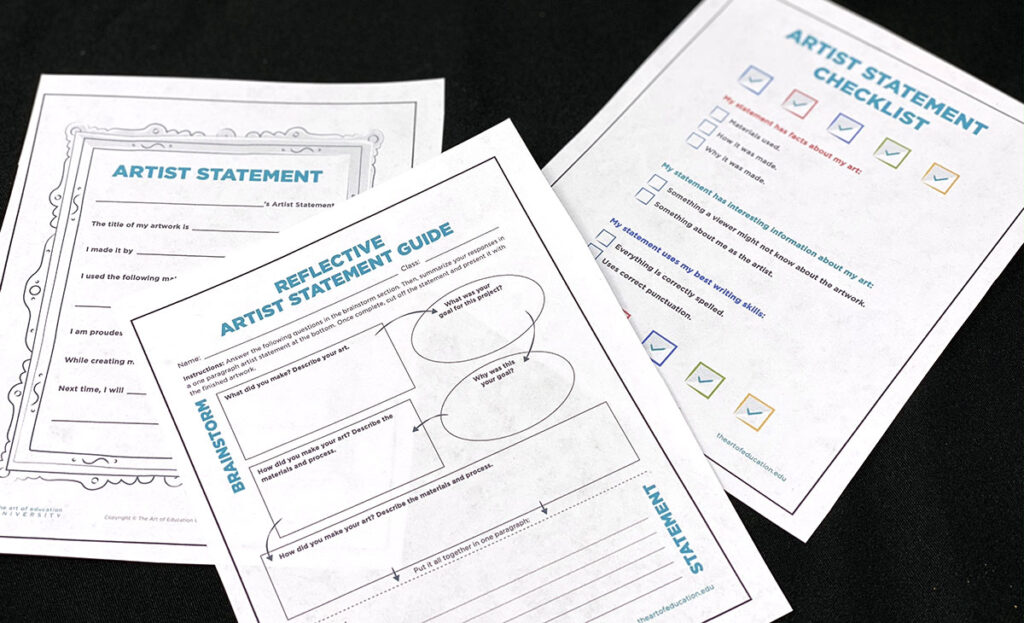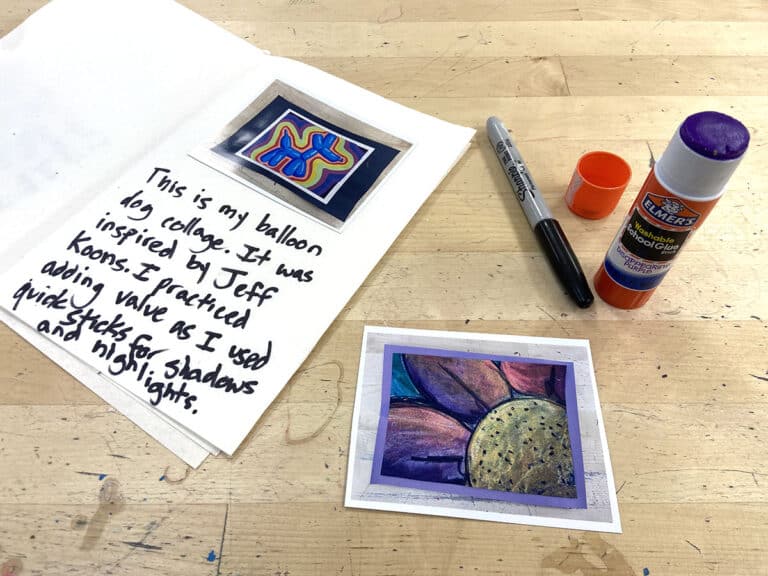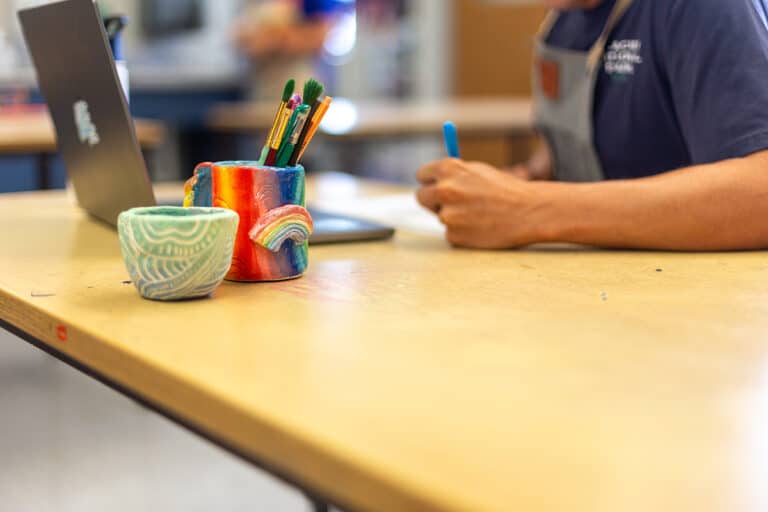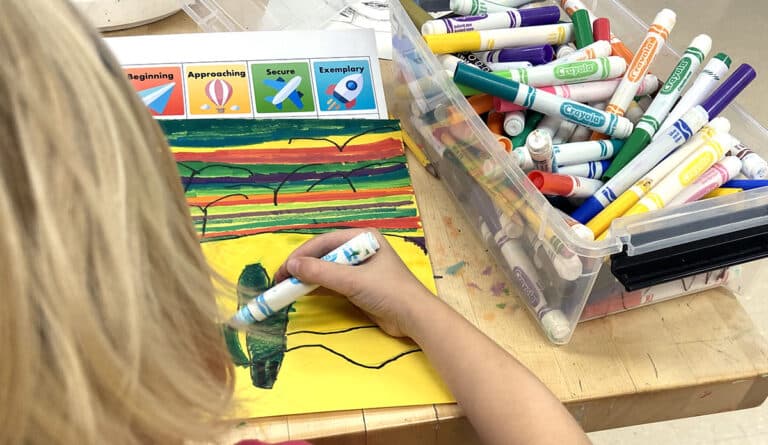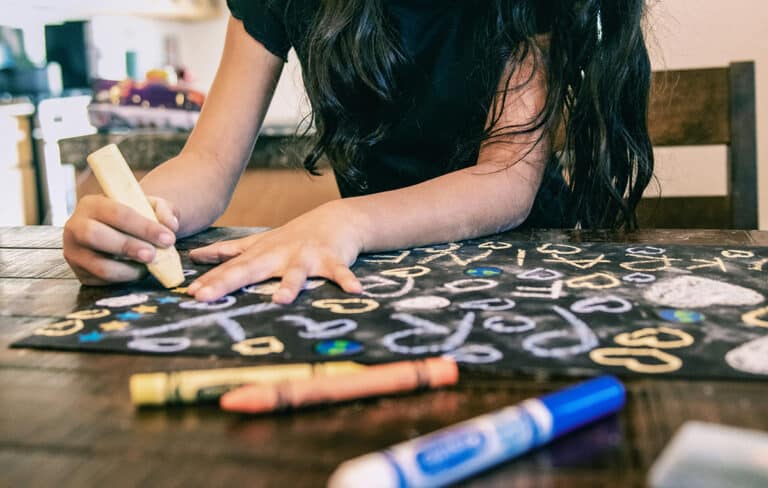When it comes to assessment, it seems like there are a million types to choose from. It can be overwhelming, especially as you approach the end of a semester or school year. However, continuing to integrate assessments and provide student feedback is as important now as it was at the beginning of the year. It keeps learning outcomes in focus, provides closure to students, and shows students how much they have grown.
Let’s take a look at 5 types of assessments in the art room and how we can circle back to them at the end of the year.
1. Pre and post-assessments show growth over an extended period of time.
A pre-test helps us understand what a student already knows (or does not know). You can give a multiple choice quiz, a fillable worksheet, or even a short task as a pre-assessment. For example, on day one, ask your students to draw with their non-dominant hand without providing any instruction. This will give you a lot of information to inform your teaching practices for the upcoming year.
A post-assessment is a great way for you, the students, and the administrative team to see how far they have come since the beginning of the course. Have students complete the same pre-test from day one. Note all the growth, such as shading techniques and observational drawing skills.
2. Checks for understanding reinforce lingering concepts and last-minute reminders.
These little quizzes, bellringers, exit slips (or even games!) help you know how your students are doing at any given moment. Of course, you are also walking around the room to check for understanding each class period informally. These “mini-assessments” give you a snapshot of what to review, reteach, or expand upon.
This is a great time of year to make sure students are on the right track as they show you everything they have learned. Use bellringers and exit tickets as students are creating a final artwork or putting finishing touches on portfolios. It would be terrible to overlook a misunderstanding of instructions or a student going in the wrong direction.
3. Critiques provide students with a variety of immediate feedback.
Critiques are the perfect peer assessment. You can assess how all students understand, interpret, and articulate what they learned in the class. Critiques can be informal or formal, verbal or written, deeply thoughtful or quick progress checks. You can also see how students can receive constructive criticism to refine their work.
We often think of critique as a final step in the artmaking process. Use critique as an opportunity for students to get critical feedback as they work toward their final outcome. Sticky notes or TAG critiques are one way to give specific, timely feedback to help students refine their vision. Try some digital ways to share comments as a quick start to the class. A formal critique is a great way to wrap up the year-end assignment. It also gives students considerations on their growth as they complete their final course reflection.
4. Reflections allow students to see the bigger picture.
This is one of the most common end-of-artwork assessments. Reflections let students ponder both the process and the outcome.
Here are some questions to guide students as they reflect:
- What worked well and why?
- What was challenging?
- Why was it challenging?
- How did you create this?
This assessment is successful because it shows thought processes, deeper meanings, and connections made. Intentional reflection makes the students thinking visible. It also allows you to see a student’s work and process from their perspective.
Nothing is better than a thoughtful reflection on how the year or semester has gone. Students get an opportunity to zoom out and look at the big picture of learning and development. Help students connect their individual works within the context of the entire year.
Ask the following questions to address the whole experience:
- What challenges did you have throughout the semester?
- How did you overcome those challenges?
- What was most successful for you this semester?
- How were those factors areas of success?
Give students closure as they reflect on their time with you, the curriculum, and their body of work. Recognize the valuable art and life skills they have learned!
5. Artist statements empower students to express deeper connections.
Artist statements differ from reflections. Students demonstrate their critical thinking and connections with their artmaking process and outcome. Students are not thinking about what did and did not go well. Instead, they articulate the artistic choices made to convey the intended meaning. This assessment also looks at students’ writing structure and communication of thoughts.
An artist statement is a great way for students to shine! Give them time to consider their final piece or collection of works in a deep and meaningful way. If they have not written one before, introduce how to talk about their work in a more formal, thought-out way. In conjunction with their art, artist statements will portray their work as a full, professional package.
Check out these articles for more assessment strategies:
- How to Write a High-Quality Art Assessment
- Celebrate Learning with a Growth Portfolio
- 4 Myths of Assessment in the Visual Arts
- How to Give Authentic Learning Assessment for Online Learning
- How to Create the Best Assessments
- 5 Tips for Better Art Assessments
Check out these assessment related PRO Packs (and many more) in PRO Learning:
- Student Portfolio Basics
- Elevating Learning Through Effective Questioning Strategies
- Designing Effective Assessment Practices
- Implementing Formative Assessment Strategies
As you wrap up the semester or year, consider what assessments you have used so far. Think about which assessments were most successful and how you communicated with your students. This is more than rubrics and grades. Now is the perfect time to support your students with feedback as they show off what they have learned. Use assessments to give your students closure at the end of the school year and showcase how much they have grown!
What are the most successful assessments you have used throughout the school year?
How do you support students through assessment as they wrap up the school year?
Magazine articles and podcasts are opinions of professional education contributors and do not necessarily represent the position of the Art of Education University (AOEU) or its academic offerings. Contributors use terms in the way they are most often talked about in the scope of their educational experiences.
